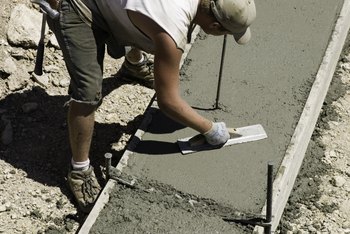Nov . 16, 2024 16:48 Back to list
formwork for suspended slab company
Formwork for Suspended Slab Construction Importance, Types, and Best Practices
Formwork plays a crucial role in the construction of suspended slabs, ensuring that the concrete is poured and cured to create safe, structurally sound elements of a building. As the architectural trend shifts towards creating open spaces with fewer supporting columns, the demand for effective suspended slab formwork systems has increased. This article explores the importance of formwork in suspended slab construction, the various types available, and best practices for their use.
Understanding Suspended Slabs
Suspended slabs are horizontal structures that span a gap between supporting walls or columns. They are commonly used in multi-story buildings as floors (to support loads while providing a flat surface) or as ceilings (to separate different levels). Due to the design and functional requirements, suspended slabs need to be meticulously planned and executed. Formwork is the temporary mold used to shape the concrete during the curing process, which makes it essential for achieving both the geometric accuracy and structural integrity of these slabs.
Importance of Formwork
Using high-quality formwork is vital in suspended slab construction for several reasons
1. Structural Integrity Proper formwork supports the weight of the wet concrete, ensuring that it retains its shape and dimensions during curing. Inadequate formwork can lead to distorted shapes, resulting in weak points within the slab.
2. Surface Finish The quality of the formwork directly affects the finish of the concrete surface. Using clean, smooth formwork can reduce surface imperfections, which can save time and cost in subsequent finishing work.
3. Safety Sturdy and reliable formwork not only ensures a well-formed slab but also contributes to the overall safety of the construction site by preventing collapses.
4. Cost and Time Efficiency Investing in high-quality formwork can reduce labor costs and the time spent on preparing and finishing the slab, thereby enhancing overall project efficiency.
Types of Formwork for Suspended Slabs
There are several types of formwork systems used for suspended slabs, each with its unique advantages
1. Timber Formwork This traditional method uses wooden boards and beams to create molds. While timber formwork is highly customizable and relatively inexpensive, it may not be as durable or reliable as other options.
formwork for suspended slab company

2. Steel Formwork Steel formwork is robust and can be reused multiple times without significant wear. It provides excellent surface finishes and is commonly used in large-scale constructions. However, it can be pricier than timber.
3. Aluminum Formwork Lightweight and corrosion-resistant, aluminum formwork is highly durable and allows for quick assembly and disassembly. It is particularly popular for repetitive building designs.
4. Prefabricated Formwork Systems These systems consist of pre-designed module components that can be quickly assembled on-site. They are often engineered for specific projects, ensuring high precision and speed.
5. Removable Formwork This system allows the formwork to remain in place for the duration of the concrete curing process. It can be beneficial for adding insulation or waterproofing elements.
Best Practices for Using Formwork
To maximize the effectiveness of formwork in suspended slab construction, follow these best practices
- Proper Planning Engage in thorough planning and design processes to select the right formwork system based on your project requirements.
- Quality Materials Use high-quality materials for formwork to ensure durability and reliability during and after the pour.
- Training Workers Ensure that all workers involved in the assembly and disassembly of formwork are adequately trained. This minimizes the risk of accidents and improves quality control.
- Regular Inspections Conduct regular inspections of the formwork to identify wear and tear early, making necessary repairs or replacements before they become problematic.
- Adhering to Standards Follow local and international construction standards and regulations to ensure safety and compliance.
Conclusion
Formwork is indispensable in the construction of suspended slabs, playing a pivotal role in achieving quality, safety, and efficiency in building projects. By selecting the appropriate type of formwork and adhering to best practices, construction companies can enhance their productivity while providing durable and safe structures. As architectural trends continue to evolve, the importance of innovative formwork solutions will undoubtedly increase, shaping the future of suspended slab construction.
-
High-Quality U Head Jack Scaffolding – Reliable Scaffolding Jack Head Manufacturer & Factory
NewsJul.08,2025
-
High-Quality I Beam H20 Leading Timber Beam H20 Material Factory, Exporters & Manufacturers
NewsJul.08,2025
-
High-Quality Powder Coating Steel Formwork - Durable & Corrosion Resistant Solutions
NewsJul.07,2025
-
Inclined Column Formwork Supplier – Durable & Precise Solutions for Unique Structures
NewsJul.07,2025
-
High-Quality Water Stop Solutions Trusted Water Stop Company & Suppliers
NewsJul.07,2025
-
High-Quality Formwork Material Supplier Reliable Manufacturer & Factory Solutions
NewsJul.06,2025